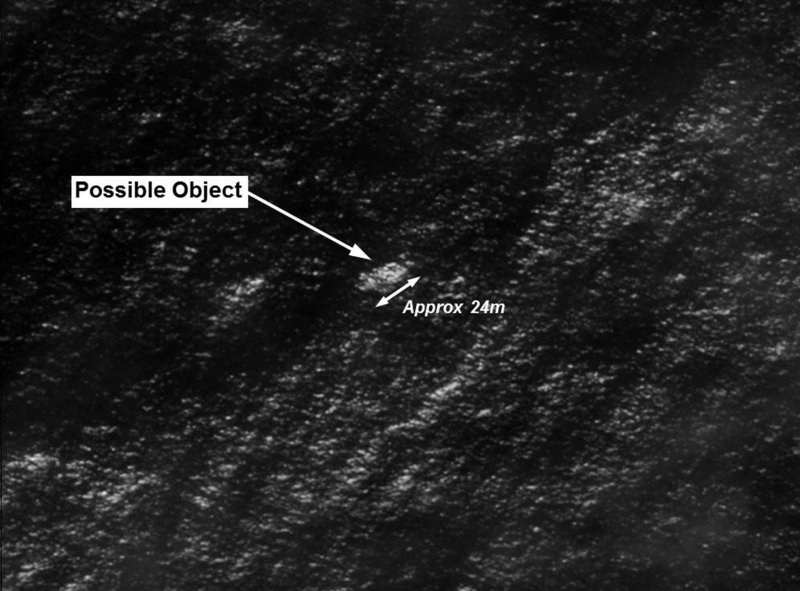1 of 3 | This satellite image released on March 20, 2014 by the Australian Maritime Safety Authority shows objects that may be possible debris of the missing Malaysia Airlines Flight MH370 in a revised area 185 km to the south east of the original search area. The imagery has been analyzed by specialists in Australian GeoSpacial-Intelligence Organisation and is considered to provide a possible sighting of objects that has resulted in a refinement of the search area. UPI/Australian Maritime Safety Authority |
License Photo
PERTH, Australia, March 21 (UPI) -- An aircraft searching the southern Indian Ocean for debris from the missing Malaysia Airlines plane spotted nothing, Australian officials said Friday.
In a YouTube video update on the search for missing Malaysia Airlines Flight MH370, John Young, general manager of Australian Maritime Safety Authority's Emergency Response Division, said the first of five aircraft returned Friday after no sightings, the Sydney Morning Herald reported.
Two planes were still in the search area and two were en route.
The first plane hadn't spotted any debris, Young said, but the weather Friday was better than the previous day.
"That's encouraging. We have no sightings yet," he said. "Although this search area is much smaller than we started with, it nonetheless is a big area when you're looking out the window and trying to see something by eye.
The apparent sighting of objects spotted by satellite imagery is the strongest lead yet in a multinational search for the Boeing 777-200 carrying 227 passengers and 12 crew members that disappeared March 8 after it departed for Beijing from Kuala Lumpur, Malaysia. A week ago, search crews found nothing after investigating objects identified in the South China Sea by a Chinese satellite and an investigation determined oil slicks spotted near Vietnam were from ships in the area.
Young said the focus of the international search in the remote, wind-swept ocean about 1,553 miles southwest of Perth was on finding people alive.
"We're still focused on that task -- of finding people to be rescued," he said. "We remain focused on finding people alive if they're to be found -- and that's tomorrow's game."
Young said searchers will be checking whether they can acquire more satellite imagery that would provide "new or refined" information about the debris.
"We want to find these objects because they are the best lead to where we might find people to be rescued," Young said.
India declined China's request to allow four warships near the Andaman and Nicobar archipelago, as it sent two aircraft to Malaysia to join the international search for the missing jetliner, Bernama reported, citing the Times of India.
Officials Thursday said China's request to allow four warships to enter Indian territorial waters was "politely turned down" since Indian warships and aircraft were already searching the Bay of Bengal and Andaman Sea.
Indian forces oppose the entry of Chinese warships anywhere near the strategically located Andaman and Nicobar Islands, where military force levels are slowly being built up with an eye on China, which has disputes with several countries concerning the ownership of islands and waterways.















